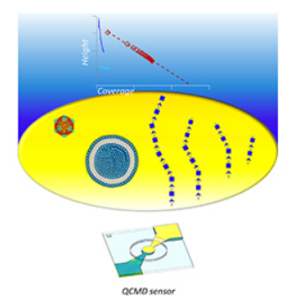A low-cost microfluidic flow stabilizer for enhancing QCM measurement stability in in-liquid bio-applications
Authors: Mohamed Adel, Ahmed Allam, Ashraf E Sayour, Hani F Ragai, Shinjiro Umezu and Ahmed M R Fath El-Bab
Journal: Eng. Res. Express
Abstract
Quartz crystal microbalance (QCM) is a powerful sensing technique widely used in various applications, including biosensing, chemical analysis, and material science. In in-liquid applications, QCM measurements are susceptible to fluctuations in fluid flow rate, which can introduce unwanted noise and compromise the accuracy and reliability of the measurements. In this work, we present an approach to enhance the stability of QCM measurements by utilizing a microfluidic flow stabilizer. The flow stabilizer is designed to minimize flow rate fluctuations, thereby reducing the impact of hydrodynamic effects on the QCM frequency response. We employ a comprehensive methodology that combines computational fluid dynamics (CFD) simulations using ANSYS Fluent software, microfabrication, and experimental testing to evaluate the effectiveness of the flow stabilizer in mitigating flow-induced fluctuations and improving the reliability of QCM measurements. For fabrication, we use direct engraving with a CO2 laser beam on polymethyl methacrylate (PMMA) material to drastically reduce the fabrication cost (to <40 cents) and fabrication time (to 35 min) of the microfluidic chip. Two different designs have been presented and tested: one with a single air reservoir and the other with two reservoirs. Two distinct setups employing a peristaltic pump and a micropump, along with a high fundamental frequency of 50 MHz QCM sensor, were utilized for comprehensive testing in this study. The experimental results demonstrated that the first and second designs of the microfluidic flow stabilizer effectively reduced the fluctuation amplitude in QCM measurements from 100% (input) to 23% and 19% (output), respectively.






